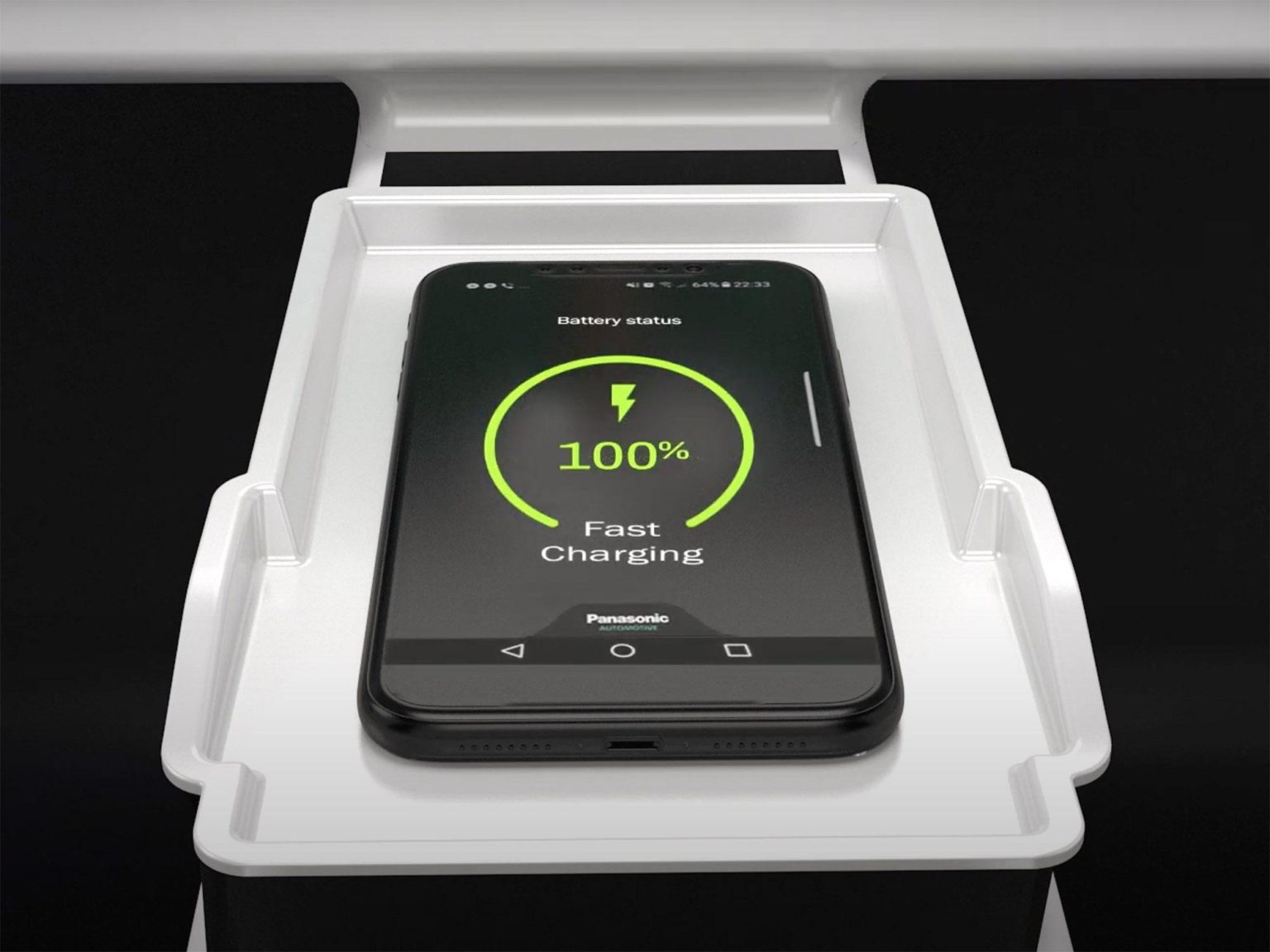Most wireless phone chargers currently installed in vehicles require a phone to be docked loosely into a specific area – to touch a certain area of the charging pad. If the phone shifts while going around a turn or because of a rough road, the phone loses its charge until you move it back into place. It can be as annoying as it sounds, especially at night when the phone lights up every time its charge status changes.
New in-vehicle wireless charging technology announced by Panasonic Automotive today changes up the wiring behind traditional wireless charging technology in an innovative way. The two types, moving coil and static coil, allow devices to be recharged quickly while vehicles turned on.
The moving coil charge variant of the wireless charging pad has patent pending tracking technology that targets a device once it’s in the tray. The coil moves into the optimum position to align with the mobile device’s charging coil and begins charging with 15 watts of charging power, one of the highest rates of charge in the industry. In addition to being able to move toward the device in need of charging, the technology has better coupling capability when compared to other wireless charging systems.
The company says that the new tech meets or exceeds most current in-vehicle charging systems.
Many new vehicles offer available wireless charging. Nearly all offer cabled charging via a USB Type A or USB Type C charging port. These wireless charging trays are frequently located at the front of the center console while others sit inside the console or require a phone to fit into a charging slot in the console.
For the 2021 model year, Hyundai began offering wireless charginng with cooling fans that work to alleviate the problem of high-heat generation that occurs while charging at higher speeds for prolonged periods of time. High temperatures may cause a device to stop working and a charger to malfunction.
In order for the system to cahrge a smartphone, the phone must be wireless charging compatible.









